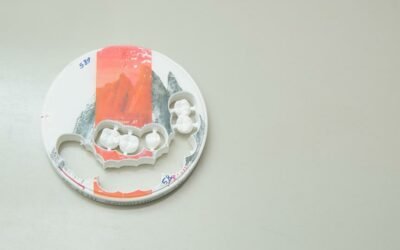Looking for the best HEPA air purifier for your classroom? Look no further! In this article, we'll guide you through the top options available, ensuring clean and fresh air for your students.
With a focus on filtration efficiency, noise levels, affordability, portability, and additional features, you'll have all the information you need to make an informed decision.
Say goodbye to airborne pollutants and hello to a healthier learning environment with the best HEPA air purifier for your classroom.
Key Takeaways
- HEPA filters with a minimum filtration efficiency of 99.97% are recommended for capturing particles as small as 0.3 microns and providing clean and healthy air for students and teachers in the classroom.
- Choose air purifiers with noise levels below 50 dB to minimize distractions, and opt for those with noise levels below 40 dB for minimal disruption.
- Consider the cost of the air purifier and long-term maintenance expenses, including filter replacement costs, while prioritizing the health and well-being of students within budget constraints.
- Select a portable HEPA air purifier that is compact, lightweight, and equipped with wheels or handles for easy movement within the classroom, and ensure flexibility in placement with a sufficiently long power cord.
Filtration Efficiency
Choose an air purifier with a HEPA filter that has a minimum filtration efficiency of 99.97%.
When it comes to ensuring clean and healthy air in a classroom, filtration efficiency is of utmost importance.
A HEPA filter stands for High-Efficiency Particulate Air, and it's designed to capture particles as small as 0.3 microns with an efficiency of 99.97%. This means that the filter can effectively trap common pollutants such as dust, pollen, pet dander, and even some bacteria and viruses.
It's crucial to opt for an air purifier with a HEPA filter that meets this minimum filtration efficiency requirement to achieve the best air quality possible. With a filtration efficiency of 99.97%, the HEPA filter can effectively remove airborne particles, providing a clean and healthy environment for students and teachers alike.
Noise Level
When considering the best HEPA air purifier for a classroom, it's important to take into account the noise level of the device. In a classroom setting, it's crucial to provide a conducive environment for learning, and excessive noise can be a distraction for both students and teachers. Noise from air purifiers can range from barely noticeable to loud, and it's essential to choose a purifier with a noise level that's acceptable for a classroom setting.
The noise level of an air purifier is measured in decibels (dB). A purifier with a noise level below 50 dB is generally considered quiet and suitable for a classroom. However, it's important to note that noise perception varies among individuals, and what might be tolerable for some might be bothersome for others. Therefore, it's advisable to consider the preferences of both students and teachers when selecting an air purifier.
To ensure minimal disruption, it's recommended to opt for air purifiers with noise levels below 40 dB. These purifiers operate quietly, allowing students to concentrate on their studies without being distracted. Additionally, some air purifiers feature a sleep mode or a low-speed setting that further reduces noise levels during quieter periods, such as naptime or independent work.
Affordability
To find an affordable HEPA air purifier for your classroom, consider the cost of the device and its long-term maintenance expenses. While it is important to prioritize the health and well-being of your students, it is also crucial to stay within your budget. Investing in a high-quality air purifier that is both effective and cost-efficient can provide a long-term solution for maintaining clean air in your classroom.
When evaluating the affordability of a HEPA air purifier, there are a few factors to consider. Firstly, look at the initial cost of the device. Compare prices from different brands and models to find the best value for your money. Additionally, consider the long-term maintenance expenses such as filter replacements. Some air purifiers require frequent filter changes, which can add up over time. Opting for a device with durable and long-lasting filters can help reduce these ongoing costs.
To assist you in making an informed decision, here is a comparison table of affordable HEPA air purifiers for classrooms:
| Brand | Model | Initial Cost | Filter Replacement Cost |
|---|---|---|---|
| A | X100 | $150 | $30 |
| B | Y200 | $120 | $25 |
| C | Z300 | $180 | $35 |
| D | W400 | $140 | $40 |
Portability
Looking for a HEPA air purifier that's easy to move around in your classroom? Portability is an important factor to consider when selecting the best air purifier for your classroom. Here are three key aspects of portability that you should keep in mind:
- Size and Weight: A portable HEPA air purifier should be compact and lightweight. Opt for a model that's easy to lift and move around, allowing you to effortlessly change its location within the classroom as needed.
- Wheels or Handles: Look for air purifiers that come with wheels or handles. These features make it even easier to transport the purifier from one area of the classroom to another. With wheels or handles, you can easily maneuver the purifier without any strain.
- Cord Length: Check the length of the power cord before purchasing a HEPA air purifier. A longer cord will give you the flexibility to place the purifier at a distance from the power outlet without the need for an extension cord. This will allow you to position the air purifier wherever it's most effective in the classroom.
Considering these three factors will help you choose a HEPA air purifier that isn't only effective in purifying the air but also easy to move around in your classroom.
Additional Features
To enhance your classroom air purification system, consider the additional features of a HEPA air purifier.
While the primary function of a HEPA air purifier is to filter out harmful particles and improve air quality, there are several additional features that can further enhance its performance.
One such feature is a carbon filter, which helps to remove unpleasant odors from the air, making the classroom environment more pleasant for both students and teachers.
Another useful feature is an ultraviolet (UV) light, which can help to kill bacteria, viruses, and other microorganisms that may be present in the air. This is especially beneficial in a classroom setting where germs can easily spread.
Additionally, some HEPA air purifiers come with a built-in air quality sensor that continuously monitors the air and adjusts the purification settings accordingly. This ensures that the purifier is always operating at the optimal level to maintain a clean and healthy environment.
Finally, some models have a timer feature that allows you to set specific operating hours, saving energy and prolonging the lifespan of the purifier.
These additional features can greatly enhance the effectiveness and convenience of a HEPA air purifier in a classroom setting.
Conclusion
Based on the evaluation of filtration efficiency, noise level, affordability, portability, and additional features, the best HEPA air purifier for classrooms can effectively remove airborne particles, maintain a quiet learning environment, offer a reasonable price point, and be easily transported.
Considering these factors, it's crucial for educational institutions to invest in a high-quality HEPA air purifier to ensure a clean and healthy environment for students and teachers alike.





0 Comments